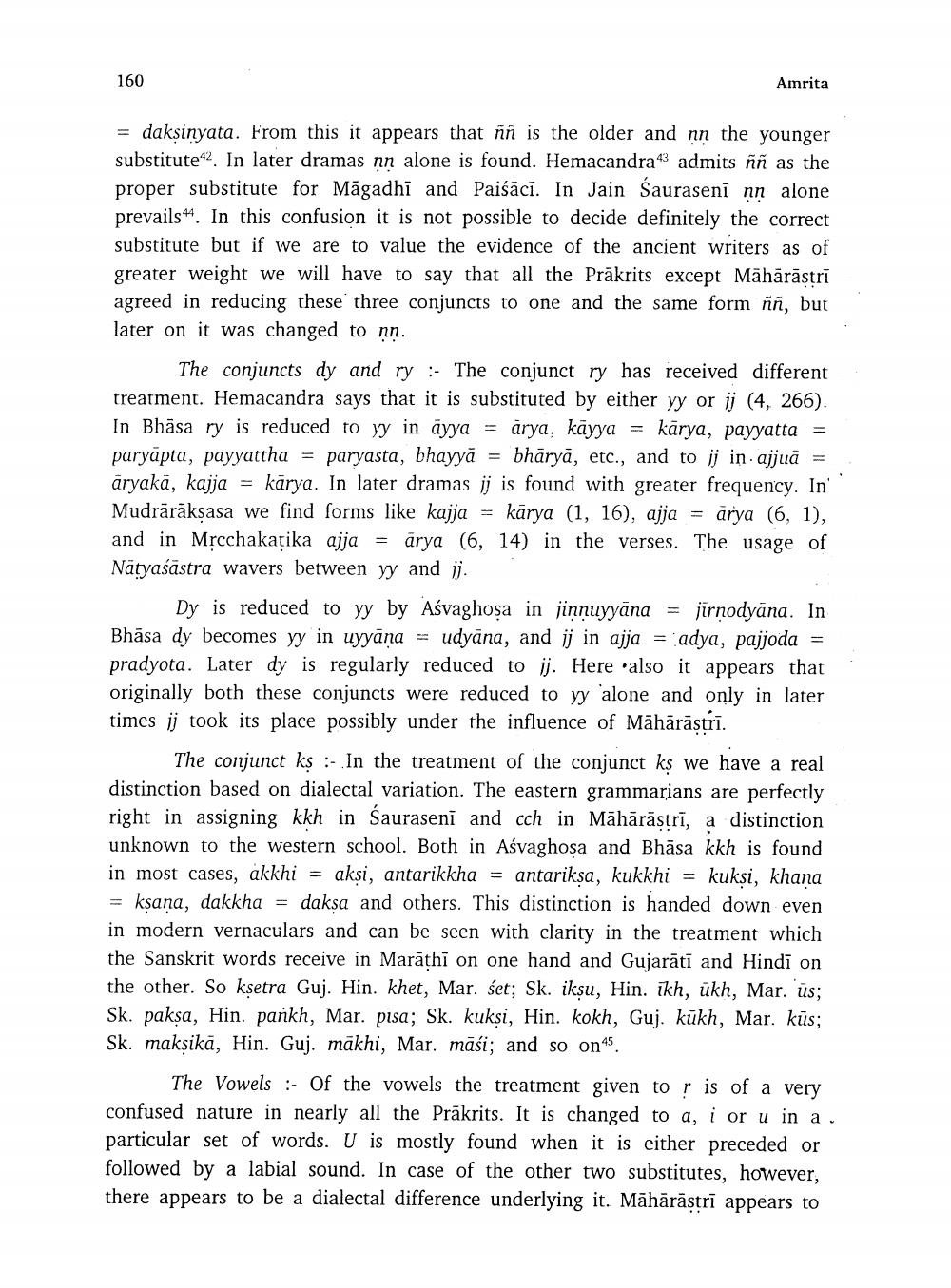________________
160
Amrita
= dāksinyatā. From this it appears that ññ is the older and nn the younger substitute42. In later dramas nn alone is found. Hemacandra43 admits ññ as the proper substitute for Māgadhi and Paiśācī. In Jain Sauraseni nn alone prevails44. In this confusion it is not possible to decide definitely the correct substitute but if we are to value the evidence of the ancient writers as of greater weight we will have to say that all the Prakrits except Māhārāstrī agreed in reducing these three conjuncts to one and the same form ññ, but later on it was changed to nn.
The conjuncts dy and ry :- The conjunct ry has received different treatment. Hemacandra says that it is substituted by either yy or ij (4, 266). In Bhāsa ry is reduced to yy in ayya = arya, kāyya = karya, payyatta = paryāpta, payyatcha = paryasta, bhayya = bhāryā, etc., and to ij in ajjua = äryakā, kajja = kārya. In later dramas jj is found with greater frequency. In Mudrārāksasa we find forms like kajja = karya (1, 16), ajja = arya (6, 1), and in Mrcchakatika ajja = arya (6, 14) in the verses. The usage of Natyaśāstra wavers between yy and ij.
Dy is reduced to yy by Aśvaghosa in jinnuyyāna = jirnodyāna. In Bhāsa dy becomes yy in uyyāna = udyāna, and ij in ajja = adya, pajjoda = pradyota. Later dy is regularly reduced to ij. Here also it appears that originally both these conjuncts were reduced to yy alone and only in later times ij took its place possibly under the influence of Māhārāstrī.
The conjunct ks :- In the treatment of the conjunct ks we have a real distinction based on dialectal variation. The eastern grammarians are perfectly right in assigning kkh in Sauraseni and cch in Māhārāstrī, a distinction unknown to the western school. Both in Aśvaghosa and Bhāsa kkh is found in most cases, akkhi = akşi, antarikkha = antariksa, kukkhi = kuksi, khana = ksana, dakkha = daksa and others. This distinction is handed down even in modern vernaculars and can be seen with clarity in the treatment which the Sanskrit words receive in Marathi on one hand and Gujarāti and Hindi on the other. So ksetra Guj. Hin. khet, Mar. set; Sk. iksu, Hin. ikh, ükh, Mar. üs; Sk. paksa, Hin. pankh, Mar. pisa; Sk. kuksi, Hin. kokh, Guj. kūkh, Mar. kus; Sk. maksikā, Hin. Guj. mākhi, Mar. māsi; and so on.
The Vowels :- Of the vowels the treatment given to r is of a very confused nature in nearly all the Prākrits. It is changed to a, į or u in a. particular set of words. U is mostly found when it is either preceded or followed by a labial sound. In case of the other two substitutes, however, there appears to be a dialectal difference underlying it. Māhārāstrī appears to




